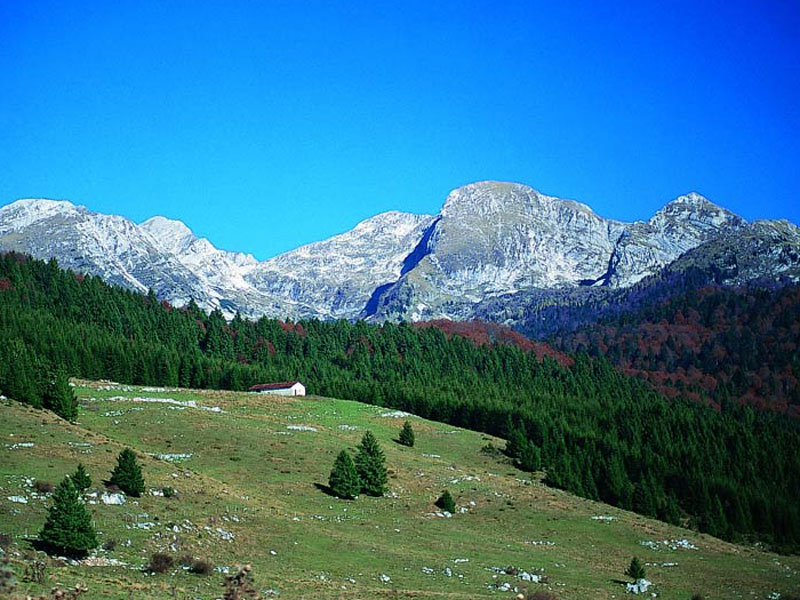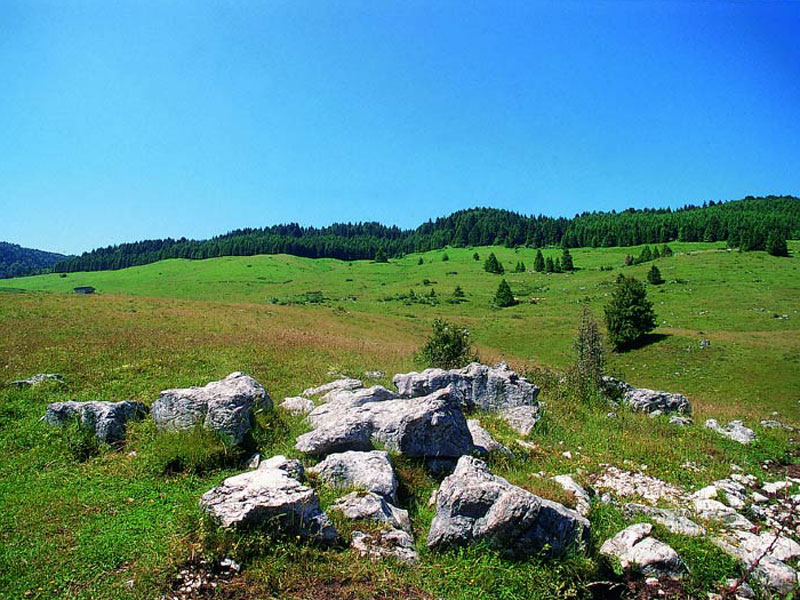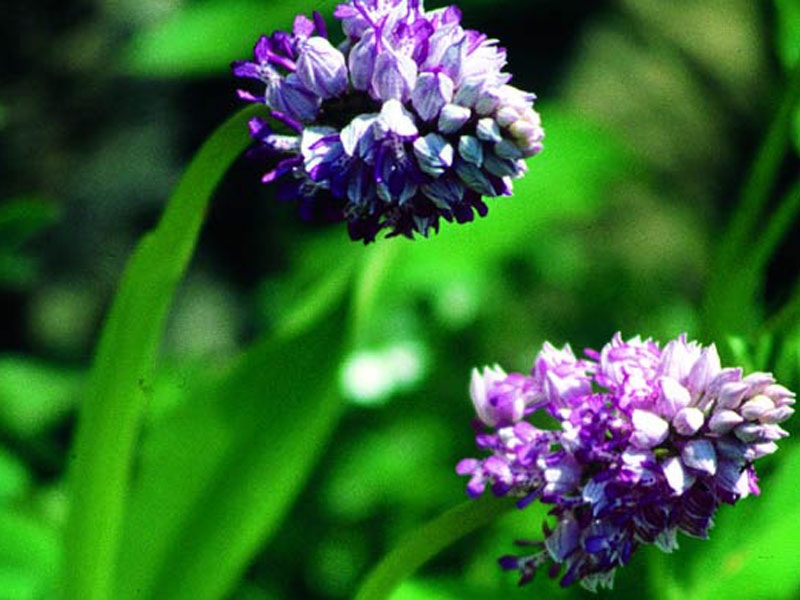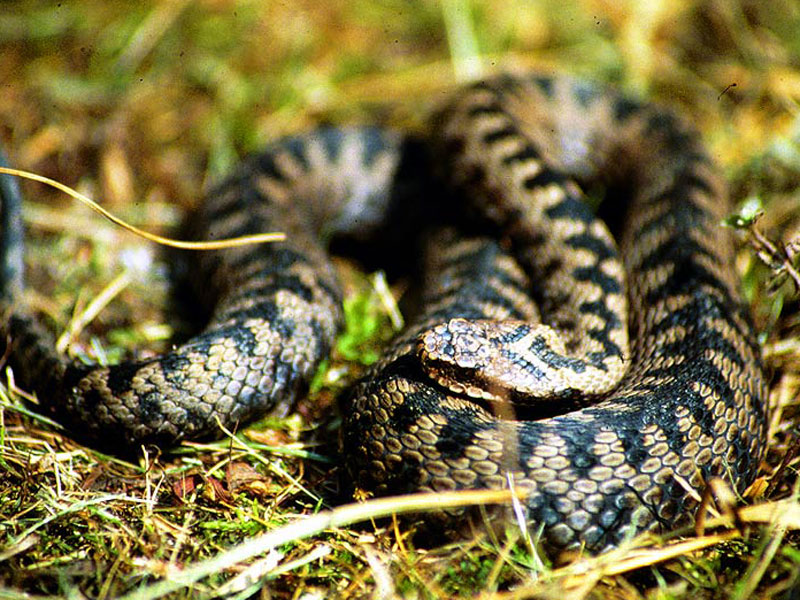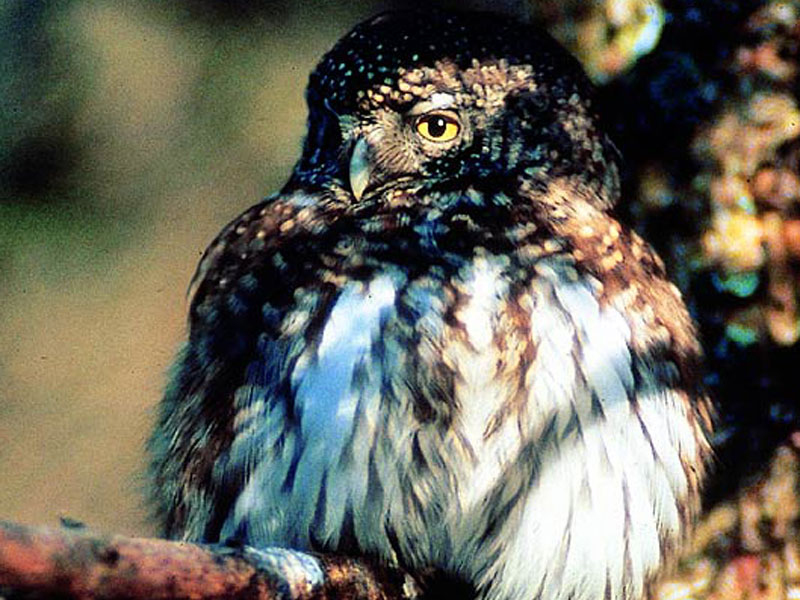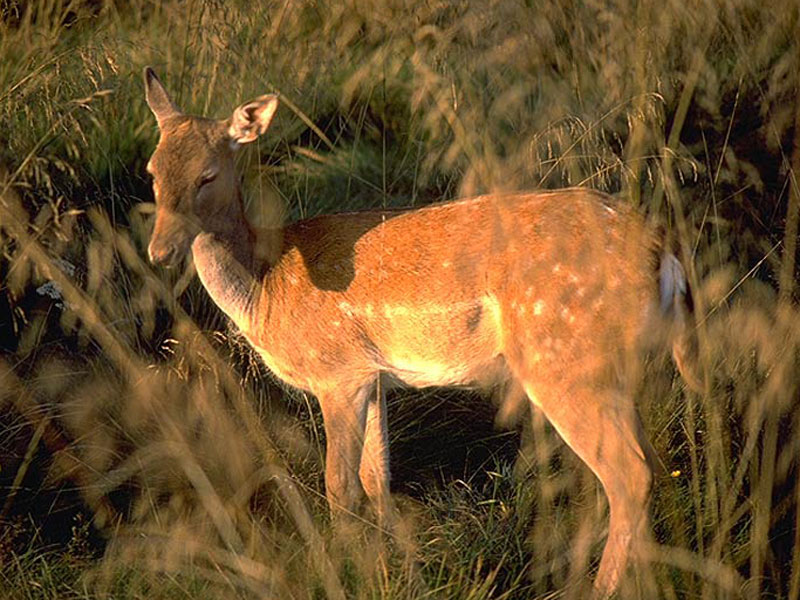Protected Area
Identity Card
- Land Surface Area: 265.14 ha
- Regions: Veneto
- Provinces: Belluno
- Municipalities: Tambre
- Establishment Measures: D.M. 26/07/1971
- PA Official List: EUAP0156
Geological and Geomorphological Aspects
Riserva Naturale Orientata "Pian di Landro-Baldassare" is
situated on the northern-eastern edge of the Plateau; it has a rather
irregular shape stretching out towards NW-SE, with a maximum width of
km 5 for km 2.
It consists of two plain areas, respectively in the
NW at 1,000-1,050m above sea-level (Pian di Landro e Baldassare), and in
the SE at 900-950m above sea-level (Valmenera); they are linked one to
the other by a rather steep and regular slope looking towards E-W.
On the Altopiano del Cansiglio it is possible to see outcropping rocks
dating back to the Upper Cretaceous period and to the Eocene epoch, and
Quaternary melted deposits. Among the most ancient rocks, there is the
Calcare del M. Cavallo: the calcareous outcrops cover most of the area
of the Riserva Naturale Orientata.
Tectonic
events considerably influenced the development of karst phenomena. The
Reserve mainly consists of plateaus which have preserved their original
shape after the orogenetic folding, like the one of Pian di Landro e di
Baldassare.
Superficial karst phenomena are particularly evident in
the areas where limestones outcrop, where there are subhorizontal
strata, and in the flat areas the morphology is characterized by closed
basins - called dolines - which have usually a flat bottom, sometimes
funnel-shaped, and within the larger structures others with much more
limited dimensions can be found. The diameter goes from a few meters to
some hundred meters: there are scattered swallow holes (small dolines
whose prosecution towards the bottom can be seen) usually filled with
detritus and vegetal remains which make impossible - at least for man -
to discover the subterranean world.
Rock fissures, above all in limestones, are often so widened by
corrosion that they form great rocky bulks, above all in the highest
areas, in the highest parts of the undulations and on the edges of the
dolines, forming a particular morphology called "Karst with blocks".
Naturalistic Aspects
Vegetation
In the natural reserve Pian di
Landro-Baldassare, the potential vegetation is represented by the fir
wood, that is a wood mainly consisting of silver firs, and sometimes of
other species like the beech. The areas covered by the fir wood are the
most valuable ones from an environmental point of view.
The
widespread presence of the Scotch fir, also within the mixed wood, has
mainly anthropic origins often linked to the historical phenomena of
the colonization of doline pastures, and therefore to the events of the
post-Glacial period.
The wetlands are particularly important in the reserve: here it is possible to find fragments of Caricetum rostratae, associations of Eleocharis palustris and Schoenoplectus lacustris, Polygonum mite and Ranunculus repens, etc. Among the hydrophytes there are Callitriche and Alisma plantago-aquatica.
Floral Species
Among the floral species there are the Orchis militaris (menaced at a regional level) which, even if it has reduced during the last years, it is not a particularly rare species. Among the most evident or medicinal species, which according to the attachment V of the guidelines about the habitat (92/43) could require the adoption of measures aimed at limiting their gathering, there are Lycopodium annotinum and Arnica montana. Finally, a very rare species at a local level is the Danthonia alpina, which is rare in Venetia and lacks in other areas of the Bellunese. Other endemic species are the Gentianella pilosa and Phyteuma scheuchzeri (always the subspecies columnae, entity of grassy-rupestrian environments).
Fauna
As far as the wildlife habitat is concerned, the reserve is a wide forest surface with mixed high forests and beech high forests; within it there are two areas with herbaceous vegetation enriching it (Pian di Landro and Valmenera) and a permanent stretch of water housing a considerable amphibian population, and where bird species characteristic of the wetlands have been observed.
Amphibians and Reptiles
The presence of small wetlands, and in particular of Lama di
Valmenera, favors the presence of a particularly interesting and
diversified community of Amphibians. In the stretches of water there is
the Alpine newt (Triturus alpestris) and where the water is deeper, the Crested newt (Triturus carnifex). The green frog prefers the perennial stretches of water, while the common toad (Bufo bufo) and the common frog (Rana temporaria)
use the wetlands only during the reproduction period (March-April) and
then return to the places where they spend the summer, in the wood or
in the pastures. The most interesting amphibian of the area is the
Alpine salamander (Salamandra atra) living in the forests, since it is completely independent from water, also for its reproduction.
Among the reptiles, the Slow warm (Anguis fragilis), the Viviparous lizard (Zootoca vivipara) in the meadows, the grass snake (Natrix natrix) usually near the stretches of water, and the asp viper (Vipera aspis francisciredi).
Birds
Birds represent a very important aspect of the fauna in the reserve and
among them there are some of the most interesting animals of the whole
Cansiglio.
The open spaces and the wetlands favour the presence of birds which are usually linked to the wetlands, such as the Grey Heron (Ardea cinerea) and the Mallard (Anas platyrhynchos); the presence of the Black Stork is also interesting (Ciconia nigra).
Besides the species which usually live in the forest like the Sparrowhawk (Accipiter nisus) and the Goshawk (Accipiter gentilis), many other birds of prey have been sighted. Among them, the Honey Buzzard (Pernis apivorus), the Black Kite (Milvus migrans), the Buzzard (Buteo buteo), the Golden Eagle (Aquila chrysaetos) nesting in the adjacent mountain areas, and the Kestrel (Falco tinnunculus), which can usually be found in the pastures.
The presence of an articulated and varied wood favours the presence of two very interesting birds: the Hazel Grouse (Bonasa bonasia), and the Capercaillie (Tetrao urogallus).
Another important aspect of the avifauna is the presence of nocturnal birds of prey, like the Pygmy Owl (Glaucidium passerinum), the Tengmalm's Owl (Aegolius funereus), the Tawny Owl (Strix aluco), and the Long-eared Owl (Asio otus).
Mammals
The most showy mammals in the reserve are without a doubt the ungulates, like the deer (Cervus elaphus), the roe deer (Capreolus capreolus), and the fallow deer (Dama dama).
The forest is also populated by much more modest species, usually by
night: their presence is confirmed by their footprints left on the mud
or on the snow, or by their excrements.
Among the smaller mammals there are the shrew (Sorex araneus) and the dwarf shrew (Sorex minutus); moreover, among the insectivorous, the mole (Talpa europaea), which is frequent in the pastures. The presence of the European hare (Lepus europaeus) is also interesting.
The wood is populated by the squirrel (Sciurus vulgaris) and the dormouse (Myoxus glis) together with their predators: the marten (Martes martes), but also the weasel (Mustela nivalis), and the fox (Vulpes vulpes). Among the rodents there are the bank vole (Clethrionomys glareolus), the common vole (Microtus arvalis), the yellow-necked mouse (Apodemus (Sylvaemus) flavicollis), and the wood mouse (Apodemus (Sylvaemus) sylvaticus).



